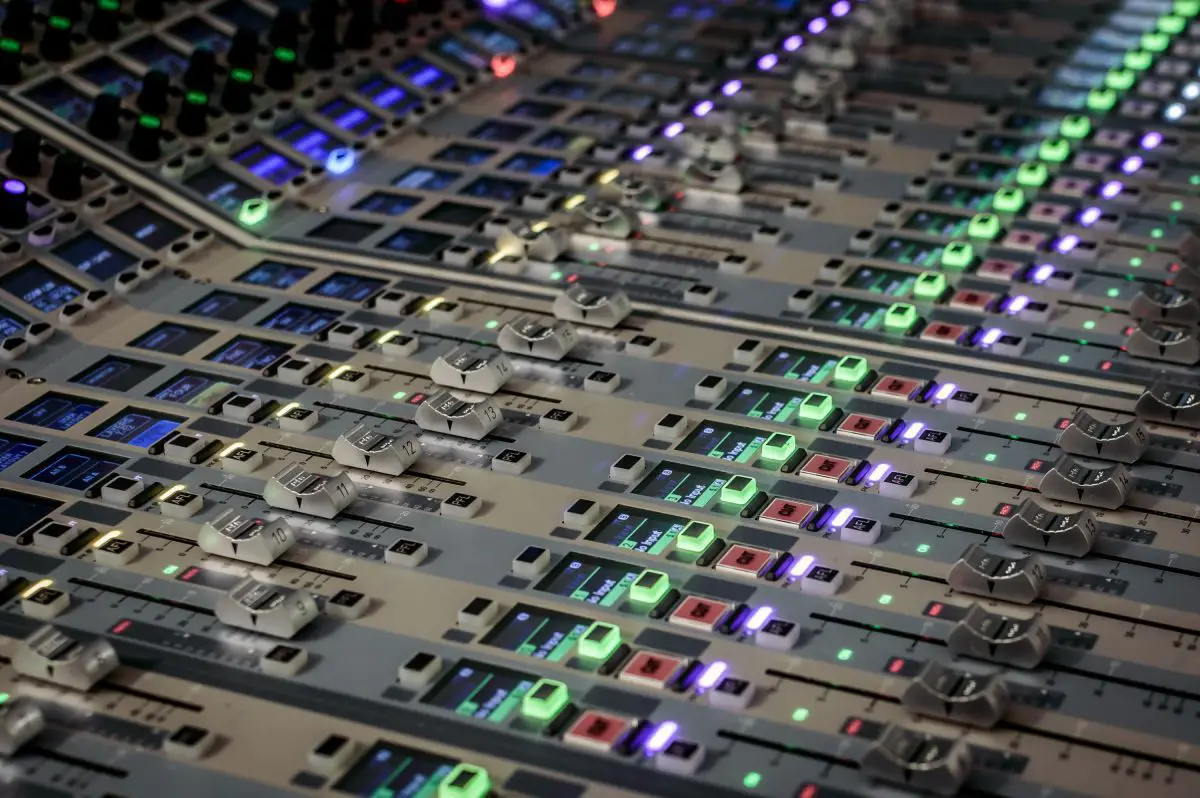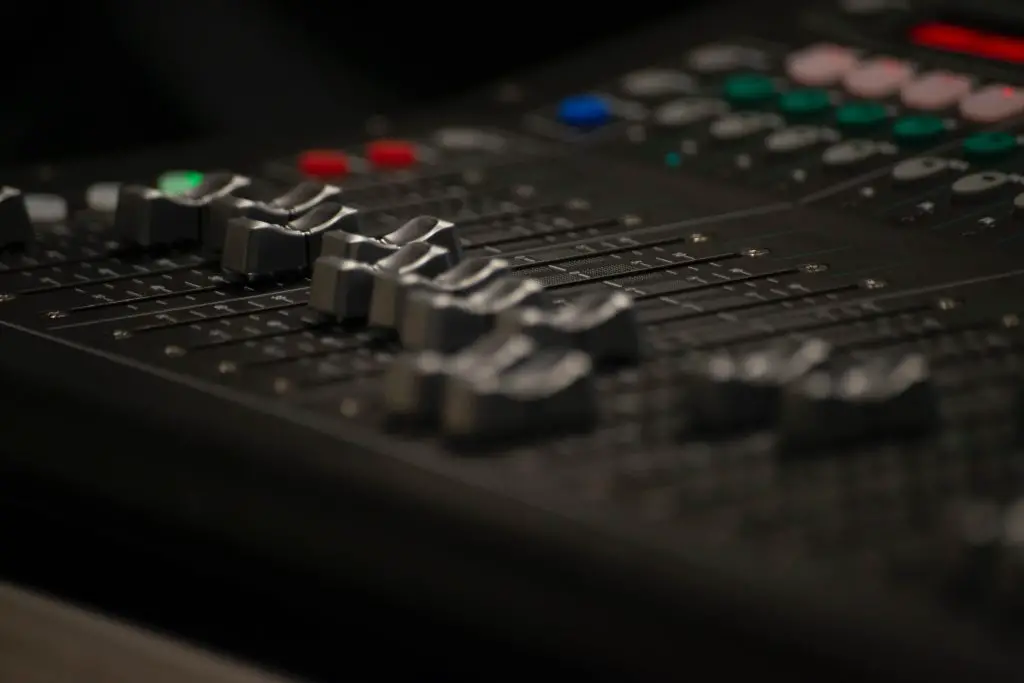Attention, aspiring audio aficionados! Have you ever found yourself puzzled, staring at a mixing console or digital audio workstation, wondering how to harness the power of those mysterious sliding contraptions called faders? Well, worry not, as we dive headfirst into the world of audio faders, where the only thing fading away will be your confusion!
In this thrilling blog post, we’ll explore the enigmatic world of faders in audio, providing a comprehensive guide for beginners. Prepare to embark on an educational journey where we’ll unravel the secrets of these indispensable tools, examine their role in audio mixing, and discuss the different types that reside in both analog and digital realms.
What is a fader in audio? A fader is a control mechanism on audio equipment, such as mixing consoles and digital audio workstations, that allows users to adjust the volume or intensity of individual sound sources within a mix. By manipulating faders, audio engineers can create balanced and harmonious audio experiences for listeners.
What is a fader in audio?
A fader in audio is a type of control found on an audio mixer that adjusts the volume of an audio signal. It typically consists of a sliding lever or knob that can be moved up or down to increase or decrease the volume. Faders are essential in audio mixing, as they allow you to control the volume of individual audio channels and create a balanced mix.

Faders can be designed as straight sliders or as rotary knobs. In audio equipment, faders and knobs are both physical parts that connect to electric parts, typically used to control potentiometers. While knobs are more common for this purpose across all audio equipment, faders are more common in mixer channels.
AKAI Professional MPK Mini MK3

AKAI Professional MPK Mini MK3
What are the different types of faders in audio equipment?
There are two main types of faders in audio equipment: linear and rotary. Linear faders are designed along straight sliders, while rotary faders are designed as knobs that can be rotated. Both linear and rotary faders are physical parts that connect to electric parts, typically used to control potentiometers.
Linear faders are more common in mixer channels, whereas knobs are more common across all audio equipment for controlling potentiometers. In terms of usage and application, both types of faders serve the same purpose of adjusting the volume of audio signals.
However, the difference lies in their design and user interaction, with linear faders being manipulated by sliding up and down along a straight line, while rotary faders require rotation of the knob to make adjustments.
Why are faders essential in audio mixing?
Faders are essential in audio mixing because they allow you to control the volume of individual audio channels, enabling you to create a balanced mix of various sound sources. By adjusting the faders, you can fine-tune the volume levels of different tracks or instruments, ensuring that no one element is overpowering or being overshadowed.
…faders can be used for dynamic changes in volume, such as creating smooth fade-ins or fade-outs or adjusting levels during different sections of a song…
Faders contribute to the audio production process in several ways. They enable you to create a basic balance between different audio sources, which is considered a critical starting point in the mixing process. Top mixing engineers argue that you can get about 80% of the way to a final mix with just fader adjustments.
This initial balance makes it easier to fine-tune the remaining elements of the mix and achieve the desired sound. Additionally, faders can be used for dynamic changes in volume, such as creating smooth fade-ins or fade-outs or adjusting levels during different sections of a song to add more depth and dynamics to the overall production.
Functions of faders in audio mixing
Faders in audio mixing serve several essential functions:
1. Adjusting volume
Faders are a type of control on audio mixers that allow you to adjust the volume of an audio signal. They typically consist of a sliding lever or knob that can be moved up or down to increase or decrease the volume.
2. Balancing individual audio channels
Audio faders are an essential part of an audio mixer, as they allow you to control the volume of individual audio channels and create a balanced mix by adjusting the levels of each sound source.
3. Controlling potentiometers
Faders and knobs are both physical parts that connect to electric parts, typically used to control potentiometers. While knobs are more common for this purpose across all audio equipment, faders are more common in mixer channels.
4. Creating a smooth and dynamic mix
The use of faders allows for precise control over the volume levels of different audio sources, enabling the engineer to create a smooth and dynamic mix that balances all the elements in a life or recorded sound environment.

What are some best practices for managing fader levels in a mix?
Managing fader levels in a mix is an essential skill for achieving a balanced and professional-sounding audio production. Here are some best practices to consider:
- Maintain proper gain staging: Ensure that the input volume (gain) and output volume (level) of each track are set correctly to avoid distortion and achieve a balanced mix.
- Start with a fader-only mix: Focus on achieving a basic balance between different audio sources using only fader adjustments before moving on to other processing techniques.
- Use line faders for precise volume control: Line faders offer greater control over individual channel volumes compared to crossfaders, which control two channels simultaneously.
- Regularly clean faders: Prevent crackling and noisy faders by using contact cleaner to remove dirt and debris, ensuring smooth and accurate fader movement.
- Allow time for contact cleaner to evaporate: After applying contact cleaner to the faders, wait a few minutes for it to evaporate before using the faders again to ensure optimal performance.
- Automate fader movements: Use automation in your DAW to create dynamic changes in volume, such as fade-ins, fade-outs, or adjusting levels during different sections of a song to add depth and interest to the mix.
Conclusion
Well, dear audio adventurers, we’ve slid through the ins and outs of faders in audio like a master audio engineer on a mixing console. Are you ready to fade into greatness with your newfound fader knowledge? And did I cover everything you wanted to know? Let me know in the comments section below (I read and reply to every comment).
If you found this article helpful, share it with a friend, and check out my full blog for more tips and tricks on audio production. Thanks for reading, and may your mixes always be as smooth as a perfectly executed fader slide!
Key takeaways
This article covered what a fader is. Here are some key takeaways:
- Faders are control mechanisms on audio equipment for adjusting the volume or intensity of individual sound sources.
- They are essential in creating balanced and harmonious mixes in audio production.
- The two main types of faders are linear (sliding) and rotary (rotating).
- Faders are used in digital audio workstations (DAWs) and analog mixing consoles.
- Tips for effective fader control include maintaining proper gain staging and applying automation in DAWs.
- Troubleshooting fader issues involves identifying and addressing common problems such as dirty faders or software glitches.
- Beginners should focus on understanding fader types, usage, and best practices for successful audio mixing.















